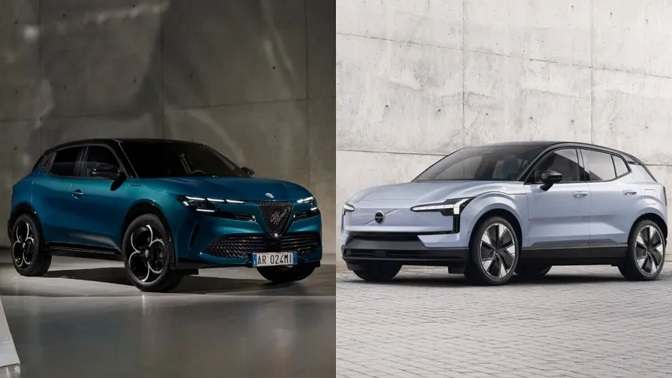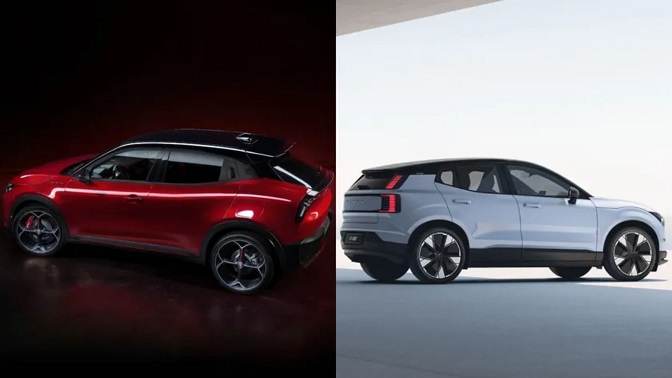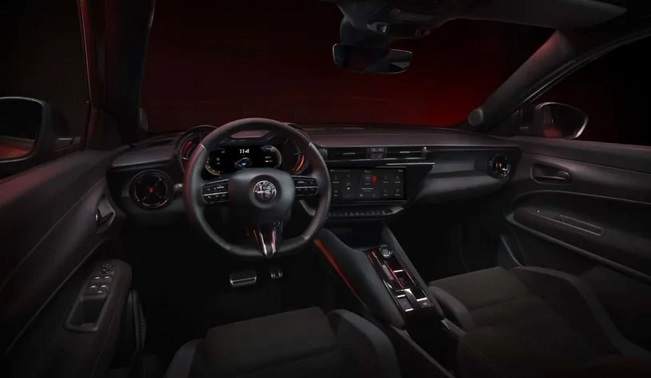The Alfa Romeo Milano and the Volvo EX30 cost almost the same. Why is one considered expensive and the other not?
The Milano Elettrica, Alfa Romeo’s new electric entry-level vehicle, was unveiled yesterday. In addition to the controversy around its divisive design, the model has drawn more criticism from Internet users (including in our comments area) for its starting price of $41,301, which is deemed excessive.

In contrast, the well-liked Volvo EX30 is frequently praised for its affordable prices—even though it costs almost the same as its competition, $40,228. Is there a valid reason for this perceived gap? We’ll examine each person’s evidence in this piece to confirm it.
According to their manufacturers, both are high-end urban SUVs. The Volvo is 4.23 meters long, compared to 4.17 meters for the Alfa Romeo. They belong in the B segment. Of course, the Italian has a more useful 400-liter trunk than the tiny 318-liter the Swede possesses.
There are two front-wheel drive models in the Milano line. With a 54 kWh NCM (nickel, cobalt, manganese) battery and a 156 HP (115 kW) motor, the Elettrica ($41,300) has a WLTP range of almost 410 km. Regarding charging, it reports a direct current peak of 100 kW (10-80% in less than 30 minutes). Above is the $50,955 Elettrica Veloce, which generates 240 horsepower (177 kW). It keeps the same pack, although its official range is yet unclear.

The Volvo EX30 is reaping interesting sales success
Three variants are available for the EX30: two with rear-wheel drive and one with all-wheel drive. A 51 kWh lithium ferrophosphate (LFP) battery and a 272 HP (200 kW) motor power the $40,228 Single Motor access variant, which has a 337 km WLTP range. Maximum charging power of 134 kW (10–80% in 25 minutes).

By using, a 69 kWh pack with NCM cells, the Single Motor Extended Range model (42,764 euros) obtains a range of 475 km WLTP. 153 kW is the peak load (10-80% in 25 minutes). By adding, a second propeller to the front axle, the top-of-the-line Twin Motor Performance ($52,559) achieves a combined output of 428 HP (315 kW). Its 450-kilometer WLTP autonomy has not changed.
The Milano Elettrica Veloce, which has a Torsen differential and 380 mm front brake discs with four-piston monobloc calipers, is sportier than the EX30 Twin Motor Performance, which is more powerful but less extreme. Everybody adheres to a very distinct philosophy.
Despite their similarities, the Elettrica and Single Motor access plans do not experience this. The Alfa Romeo has more autonomy than the Volvo, despite the Volvo’s emphasis on performance. However, the equipment list doesn’t alter because it includes the necessities as standard: Climate control, adaptive cruise control, and LED headlights.
Most intriguingly, the Volvo exhibits several cost-cutting measures that its competitor does not: it does not have instrumentation behind the steering wheel, the climate control system lacks physical controls, a sound bar has been installed in place of the front speakers, and the window regulators are housed in the center console. Furthermore, it will start in China in 2025, It will also be made in Belgium, whereas the Alfa Romeo Poland.
Why is the Milano seen as a less appealing electric car and the EX30 as a more affordable option? It is most likely because Alfa Romeo’s parent firm, the Stellantis group, has gained notoriety for putting out pricey cars into rivals to put profit ahead of volume. Furthermore, the company must sell several electric cars with precisely the same drivetrain (156 HP and 54 kWh), making it difficult to distinguish between the various brands that comprise its lineup.
Regardless, based on the available data, the Alfa Romeo Milano Elettrica is positioned as a formidable competitor to the Volvo EX30, which is seeing remarkable sales success. Will the rookie be able to duplicate his impressive performance?
Related Post
